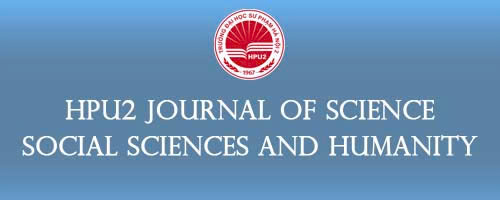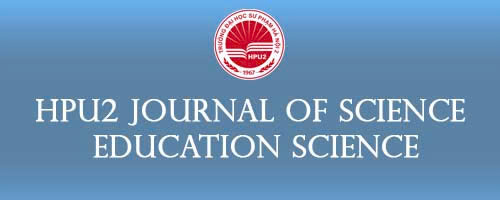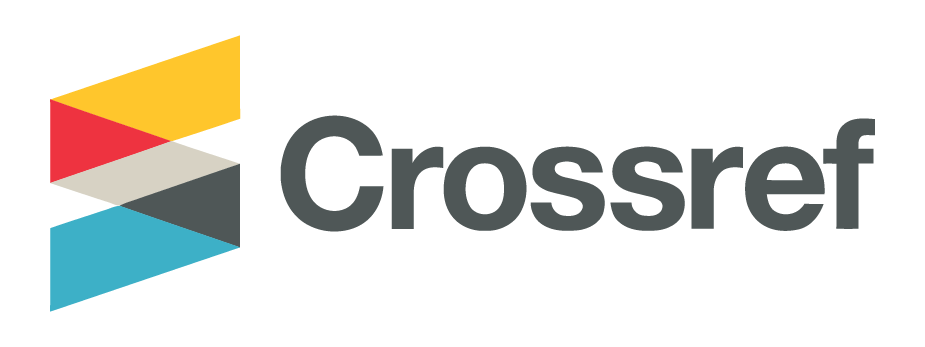Algebraic method for image reconstruction in ultrasonic tomography
DOI:
https://doi.org/10.56764/hpu2.jos.2024.3.3.27-34Abstract
Ultrasound tomography is crucial due to its capability to deliver detailed, real-time, and non-invasive imaging. This is essential for early diagnosis, treatment planning, and guiding medical procedures. Its affordability, portability, and safety make it a versatile tool in medical and non-medical fields alike, driving ongoing advancements in technology and applications. The Distorted Born Iterative Method (DBIM) is an advanced technique used in ultrasound tomography to iteratively restore images, improving upon the standard Born approximation by addressing some of its limitations. However, the DBIM also has its own set of disadvantages when used for iterative image restoration, resulting in computational complexity, noise sensitivity, convergence issues, etc. In this paper, we introduce a new method for image reconstruction in ultrasound tomography by using the algebraic method. The numerical results indicate that this method has a shorter computational time and achieves high-resolution reconstructions and accurate solutions.
References
[1] B. A. Roberts and A. C. Kak, “Reflection mode diffraction tomography,” Ultrason. Imaging, vol. 7, no. 4, pp. 300–320, Oct. 1985, doi: 10.1177/016173468500700403.
[2] M. Born et al., Principles of optics: Electromagnetic theory of propagation, interference and diffraction of light, 7th ed. Cambridge, UK: Cambridge University Press, 1999, doi: 10.1017/cbo9781139644181.
[3] A. C. Kak, “Computerized tomography with X-ray, emission, and ultrasound sources,” Proc. IEEE, vol. 67, no. 9, pp. 1245–1272, Sept. 1979, doi: 10.1109/proc.1979.11440.
[4] D. Hiller and H. Ermert, “Ultrasound computerized tomography using transmission and reflection mode: Application to medical diagnosis,” in Acoustical imaging. Boston, MA, USA: Springer, 1982, pp. 553–563, doi: 10.1007/978-1-4613-9780-9_51.
[5] W. Munk and C. Wunsch, “Ocean acoustic tomography: Rays and modes,” Rev. Geophys., vol. 21, no. 4, pp. 777-793, May 1983, doi: 10.1029/rg021i004p00777.
[6] P. Lasaygues, J. P. Lefebvre, and S. Mensah, “High resolution low frequency ultrasonic tomography,” Ultrason. Imaging, vol. 19, no. 4, pp. 278–293, Oct. 1997, doi: 10.1177/016173469701900404.
[7] J. W. Eberhard, “Ultrasonic tomography for nondestructive evaluation,” Annu. Rev. Mater. Sci., vol. 12, no. 1, pp. 1–21, Aug. 1982, doi: 10.1146/annurev.ms.12.080182.000245.
[8] W. A. Grandia and C. M. Fortunko, “NDE applications of air-coupled ultrasonic transducers,” in 1995 IEEE Ultrason. Symp. Proc. An Int. Symp. Seattle., 1995, pp. 697–709, doi: 10.1109/ultsym.1995.495667.
[9] P. Lasaygues, E. Ouedraogo, J. -P. Lefebvre, M. Gindre, M. Talmant, and P. Laugier, “Progress towards in vitro quantitative imaging of human femur using compound quantitative ultrasonic tomography,” Phys. Med. Biol., vol. 50, no. 11, pp. 2633–2649, May 2005, doi: 10.1088/0031-9155/50/11/013.
[10] M. Slaney, A. C. Kak, and L. E. Larsen, “Limitations of imaging with first-order diffraction tomography,” IEEE Trans. Microw. Theory Tech., vol. 32, no. 8, pp. 860–874, Aug. 1984, doi: 10.1109/tmtt.1984.1132783.
[11] C. Lu, J. Lin, W. Chew, and G. Otto, “Image reconstruction with acoustic measurement using distorted born iteration method,” Ultrason. Imaging, vol. 18, no. 2, pp. 140–156, Apr. 1996, doi: 10.1177/016173469601800204.
[12] W.C. Chew, Waves and fields in inhomogeneous media. New York, USA: Wiley-IEEE Press, 1999, doi: 10.1109/9780470547052.
[13] S. Delamare, “An improvement of back-scattered ultrasonic tomography,” C.R. Acad. Sci., Ser. IIb: Mec., Phys., Chim., Astron., vol. 327, no. 5, pp. 475–480, May 1999, doi: 10.1016/s1287-4620(99)80103-3.
[14] O. S. Haddadin and E. S. Ebbini, “Multiple frequency distorted born iterative method for tomographic imaging,” in Acoustical imaging. Boston, MA, USA: Springer, 1997, pp. 613–619, doi: 10.1007/978-1-4419-8588-0_96.
[15] O. S. Haddadin and E. S. Ebbini, “Imaging strongly scattering media using a multiple frequency distorted Born iterative method,” IEEE Trans. Ultrason. Ferroelectr. Freq. Control, vol. 45, no. 6, pp. 1485–1496, Nov. 1998, doi: 10.1109/58.738288.
[16] A. G. Tijhuis, K. Belkebir, A. C. S. Litman, and B. P. De Hon, “Multiple-frequency distorted-wave Born approach to 2D inverse profiling,” Inverse Probl., vol. 17, no. 6, pp. 1635–1644, Nov. 2001, doi: 10.1088/0266-5611/17/6/307.
[17] A. G. Tijhuis, K. Belkebir, A. C. S. Litman and B. P. de Hon, “Theoretical and computational aspects of 2-D inverse profiling,” IEEE Trans. Geosci. Remote Sens., vol. 39, no. 6, pp. 1316–1330, June 2001, doi: 10.1109/36.927455.
[18] Kamal Belkebir and M. Saillard, “Special section: Testing inversion algorithms against experimental data,” Inverse Probl., vol. 17, no. 6, pp. 1565–1571, Nov. 2001, doi: 10.1088/0266-5611/17/6/301.
[19] J. C. Ye, K. J. Webb, R. P. Millane, and T. J. Downar, “Modified distorted Born iterative method with an approximate Fréchet derivative for optical diffusion tomography,” J. Opt. Soc. Am. A: Opt. Image Sci. Vis., vol. 16, no. 7, pp. 1814–1826, Jul. 1999, doi: 10.1364/josaa.16.001814.
[20] R. Guillermin, P. Lasaygues, J. P. Sessarego, and A. Wirgin, “Imaging an object buried in the sediment bottom of a deep sea by linearized inversion of synthetic and experimental scattered acoustic wavefields,” Inverse Probl., vol. 16, no. 6, pp. 1777–1797, Dec. 2000, doi: 10.1088/0266-5611/16/6/312.
Downloads
Published
How to Cite
Volume and Issue
Section
Copyright and License
Copyright (c) 2024 The-Lam Nguyen, Quang-Huy Tran

This work is licensed under a Creative Commons Attribution-NonCommercial 4.0 International License.







